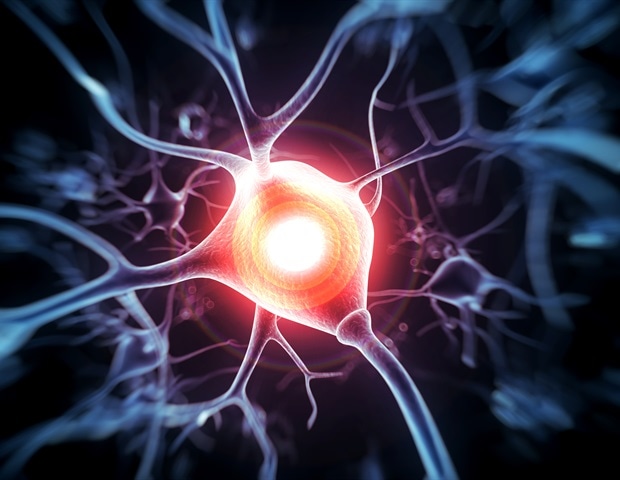By analyzing millions of messenger RNA molecules (mRNA) during the course of ALS, researchers at Stockholm University, in collaboration with scientists at the Paris Brain Institute and Örebro University, have identified why certain nerve cells are resistant to the disease and what happens in the sensitive nerve cells when they are affected. The study, published in the scientific journal Genome Research, focuses on a hereditary form of ALS caused by mutations in the SOD1 gene.
We have gained a better understanding of how nerve cells can be protected against ALS. This opens up new targets for future therapies.”
Eva Hedlund, professor of neurochemistry at Stockholm University and head of the study
The fatal disease amyotrophic lateral sclerosis (ALS) occurs when specific nerve cells, known as motor neurons, die and their connections – synapses – with skeletal muscles break down. However, a few groups of motor neurons are resistant to the disease, including those that control the muscles of the eye. The study shows that resistant motor neurons do not react significantly to the disease when it is caused by a hereditary SOD1 mutation, probably because they have very high basal levels of several nerve-protecting factors, such as Engrailed-1 (En1), Parvalbumin (Pvalb), Cd63, and Galanin (Gal). En1 is a transcription factor, a kind of “switch” for genes, which controls which proteins are produced in the cell.
“From previous research, we know that it can protect sensitive neurons from breaking down,” says one of the co-authors, Dr Melanie Leboeuf. “But the fact that the protective factor is produced at such high levels in the resistant motor neurons that control eye movements was a surprise.”
The research team was also able to show that sensitive motor neurons activate both harmful and protective responses to ALS.
“The nerve cells show clear signs of trying to protect themselves and activate genes that are normally high in the resistant nerve cells, such as En1, Pvalb, Cd63, and Gal. They also try to reestablish lost contact with the muscles by activating regeneration-promoting genes such as Atf3 and Sprr1a, even though these attempts ultimately fail,” says Eva Hedlund.
The discovery of distinct basal and induced gene activity in different nerve cells opens up new possibilities for treatment.
“By trying to stimulate the cells to suppress the bad responses and instead further stimulate those that are important for survival, there is a chance that we may see positive results in the future,” says Eva Hedlund.
To understand which gene responses from the sensitive motor neurons that can best be used to predict the disease, the research team used machine learning, a branch of AI. This enabled the team to identify the genes VGF, INA, and PENK as strong indicators of disease across different mutations and that these genes could be used to identify ALS in human samples.
“We see a possibility that these genes could eventually be used as biomarkers for the disease and help with diagnosis and prognosis,” says Irene Mei, PhD student at the Department of Biomedical Sciences and Biophysics at Stockholm University and first author of the study.
Source:
Journal reference:
Mei, I., et al. (2025). Transcriptional modulation unique to vulnerable motor neurons predicts ALS across species and SOD1 mutations. Genome Research. doi.org/10.1101/gr.279501.124.
